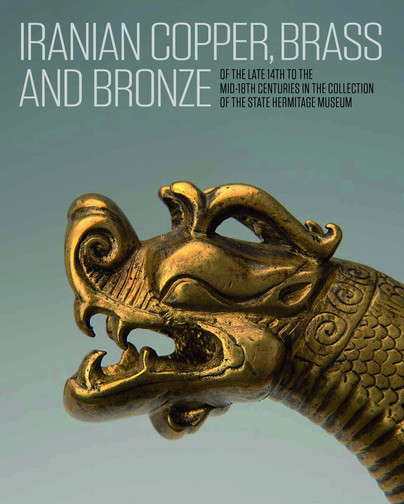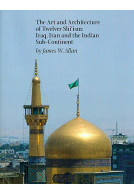Google Books previews are unavailable because you have chosen to turn off third party cookies for enhanced content. Visit our cookies page to review your cookie settings.
Iranian Copper, Brass and Bronze (Hardback)
Of the late 14th to the mid-18th centuries in the Collection of the State Hermitage Museum
Imprint: Azimuth Editions
Pages: 412
Illustrations: 477
ISBN: 9781898592372
Published: 15th August 2020
Script Academic & Professional
Pages: 412
Illustrations: 477
ISBN: 9781898592372
Published: 15th August 2020
Script Academic & Professional
You'll be £29.00 closer to your next £10.00 credit when you purchase Iranian Copper, Brass and Bronze. What's this?
+£4.99 UK Delivery or free UK delivery if order is over £40
(click here for international delivery rates)
Need a currency converter? Check XE.com for live rates
(click here for international delivery rates)
Need a currency converter? Check XE.com for live rates
In Western Europe the Golden Age of Islamic metalwork in Iran was (and is) generally considered to be the earlier period, and later metalwork was collected almost by accident and has been correspondingly little studied and poorly published, though in recent decades the imbalance has been somewhat modified. The Hermitage Collection, which numbers 162 pieces is the largest collection in the world of later Iranian Islamic metalwork, from the West of Iran as far as the Punjab. The great majority of these are household utensils, and their manufacture is characteristic of the middling levels of urban societies, though in Khurasan in the late-15th and early 16th centuries brasses or bronzes inlaid with gold and silver were made for its Timurid rulers. The substantial numbers of Iranian copper-alloy astronomical instruments of this period were made by different craftsmen, for a different public, and deserve separate treatment, though not magic bowls, used in folk-medicine and divination, which are noticed in this volume.
In his Introduction, Anatolii Ivanov gives a valuable directoryof museums and other institutions of the former Soviet Union with significant collections, which complement the holdings of the Hermitage and together amount to a truly substantial corpus. The latter were acquired from private collections, but the core of the collection, from the museum attached to the school of industrial drawing founded by Baron Stieglitz, came to the Hermitage in the 1920s, when this was broken up. As well as minutely detailed descriptions of each piece and analyses of their decoration, Ivanov presents a detailed critical survey of the limited documentary evidence afforded by the inscriptions many pieces bear, which is of permanent value as a basis for further scholars working on later Islamic metalwork in general.
Other titles in Azimuth Editions...












